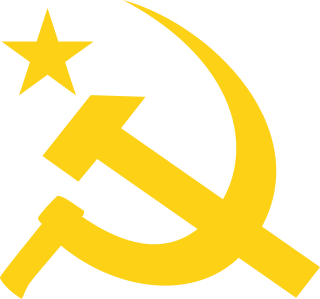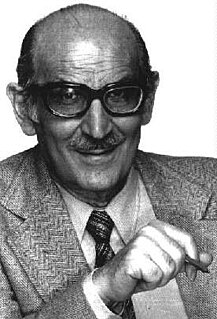
The Farabundo Martí National Liberation Front is one of the two major political parties in El Salvador.
Coordinadora Revolucionaria de Masas was a coordination of revolutionary mass organizations in El Salvador formed on January 11, 1980.
The Party of Communist Unification in the Canaries was a communist party working for the political autonomy of the Canary Islands. PUCC appeared sometime in 1975, and held its first conference in 1978. PUCC originated from OPI a leftist split of the Communist Party of Spain. PUCC worked underground during caudillo Francisco Franco's Spanish State. The leader of PUCC was Paco Tovar Santos, and its internal bulletin was called Comunista ("Communist").
Revolutionary Communist Party, a communist political party in Spain. PCR was formed through a split in PCPE. PCR published La Forja until 2006, since them the party has largely ceased its public activities. The PCR is an orthodox maoism organization, being highly critical of the other communist parties of Spain, specially of the importance those parties give to Republicanism positions. The PCR has been linked with the Anti-imperialist Movement.

The National Assembly of the Socialist Left was an alliance of far-left groups in Mexico. The only assembly of the socialist left for the creation of a "Socialist Front" was held in Mexico City April 16–17, 2005. The appeal inviting to the meeting was signed by:
The Revolutionary Communist Party was a Maoist communist political party in Peru in the 1970s. Founded as a split faction from Vanguardia Revolucionaria-Político Militar, it was led by Manuel Dammert Ego-Aguirre and Ernie de la Jara y Basombrío.

The Revolutionary Communist Party is a communist and anti-revisionist Marxist-Leninist political party in Brazil with strong Stalinist and far-left tendencies. Originally formed in 1966 after a split with the Communist Party of Brazil, it later merged with the October 8th Revolutionary Movement in 1981, from which it split in 1995. It is a member of the International Conference of Marxist-Leninist Parties and Organizations (ICMLPO), an organization of anti-revisionist and Hoxhaist parties. As the party is not registered in Brazil's Superior Electoral Court, its members cannot run for public office.
Ricardo Letts Colmenares is a left-wing Peruvian politician.

Revolutionary Communist League was a political party in Spain. It was founded in 1971 by members of the Catalan group Comunisme, a split of the Popular Liberation Front (FLP). The LCR had a trotskyist ideology, adopting more heterodox political positions in the 1980s.
Communist Party of the Canary Islands (provisional), later Party of the Canarian Revolution, PRC) was a Marxist-Leninist and Canarian nationalist political party operating in the Canary Islands. The party aim was self-determination for the islands and socialism.

Fernando Nadra was an Argentine lawyer, journalist and public speaker. He was one of the most important leaders of the Partido Comunista Argentino and, from his Marxist ideological perspective, took part in most of the important political debates of his time. He stood out from other left-wing leaders of his time for his abilities as an organizer and collective activist, and his numerous attempts to promote agreement among different political sectors through pluralistic dialogue.







